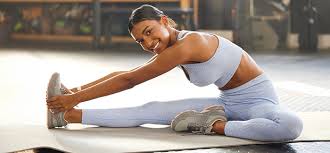Mobility and Flexibility: What’s the Difference and Why They Matter
When it comes to fitness, two terms often used together—but not always fully understood—are mobility and flexibility. While they are related and often overlap in practice, they are not the same thing. Each plays a unique role in how your body moves, performs, and stays injury-free. Let’s break them down clearly and explore why both are essential for functional movement, athletic performance, and everyday well-being.
What is Flexibility?
Flexibility refers to the ability of a muscle or muscle group to lengthen passively through a range of motion. It’s essentially how far a muscle can stretch without active movement from your body.
Example:
When you bend over to touch your toes and feel the stretch in your hamstrings—that’s testing your flexibility. You’re allowing gravity and your body weight to move you into the position, without actively engaging the muscles to control the movement.
Key Points About Flexibility:
- It’s passive—you’re not necessarily moving; you’re just allowing muscles to stretch.
- Flexibility is typically improved through static stretching, where you hold a position for 20–60 seconds.
- Good flexibility helps prevent injuries, reduce muscle tightness, and improve posture.
What is Mobility?
Mobility is the ability of a joint to move actively through its full range of motion, with control and stability. It involves not just muscles, but also joints, tendons, ligaments, and the nervous system.
Example:
A deep squat requires good mobility in your ankles, hips, and knees. You’re not just stretching those areas—you’re actively controlling the movement as you go down and come back up.
Key Points About Mobility:
- It’s active—you’re using your muscles to move and control the joint.
- Mobility includes strength, control, and coordination, not just range.
- Good mobility is essential for functional movements, athletic performance, and injury prevention.
Flexibility vs. Mobility: What’s the Difference?
| Feature | Flexibility | Mobility |
|---|---|---|
| Type | Passive | Active |
| Focus | Muscle length | Joint movement and control |
| Example | Sitting in a stretch | Actively moving into a deep squat |
| Training Method | Static stretching | Dynamic stretching, mobility drills |
| Goal | Increase range of motion | Improve movement quality and control |
Why You Need Both
Having flexibility without mobility is like having slack in a rope that you can’t actually pull through. You might be able to stretch a muscle, but if you can’t control the movement actively, your risk of injury increases.
On the other hand, having mobility without flexibility can limit how far you move or how efficiently your body works. You might feel stiff, even if your muscles are strong.
In short:
- Flexibility allows you to get into a position.
- Mobility allows you to control that position.
Together, they ensure you move freely, safely, and efficiently.
Benefits of Improving Mobility and Flexibility
- Better Posture
Both mobility and flexibility contribute to optimal posture by allowing your muscles and joints to stay aligned. - Reduced Risk of Injury
Flexible muscles and mobile joints reduce strain on the body and help avoid compensation patterns that cause injury. - Enhanced Athletic Performance
Mobility allows for smoother, more powerful movements. Athletes with better joint control tend to run faster, jump higher, and move more efficiently. - Improved Recovery and Less Pain
Regular mobility and flexibility work helps prevent soreness, reduces stiffness, and keeps you feeling loose and energized. - Easier Everyday Movement
Whether reaching, bending, twisting, or squatting, mobility and flexibility make day-to-day tasks easier and more comfortable.
How to Improve Mobility and Flexibility
For Flexibility:
- Static Stretching: Hold each stretch for 30–60 seconds after workouts.
- Yoga: Enhances passive range of motion and relaxation.
- Deep Breathing: Helps muscles relax during stretching.
For Mobility:
- Dynamic Warm-Ups: Leg swings, arm circles, hip openers before workouts.
- Controlled Articular Rotations (CARs): Slow, controlled joint movements to strengthen range.
- Foam Rolling: Releases tension and improves tissue quality.
- Strength Training Through Full Range of Motion: Like deep squats and overhead presses.
Sample Routine (10 Minutes Daily)
| Movement | Type | Duration |
|---|---|---|
| Arm circles & shoulder rolls | Mobility | 1 minute |
| Cat-Cow stretch | Mobility | 1 minute |
| World’s Greatest Stretch | Both | 2 minutes |
| Deep bodyweight squat hold | Both | 2 minutes |
| Standing hamstring stretch | Flexibility | 1 minute each leg |
| Seated forward fold | Flexibility | 2 minutes |
Conclusion
Mobility and flexibility are foundational to healthy, functional movement. While flexibility helps you lengthen your muscles, mobility allows you to use that range with strength and control. Together, they improve performance, reduce injury risk, and make everyday tasks easier.
Whether you’re an athlete, a fitness enthusiast, or someone just trying to move pain-free, making time for both will keep your body strong, supple, and resilient. Think of them as your body’s maintenance work—they may not be flashy, but they’re essential for long-term health and performance.

